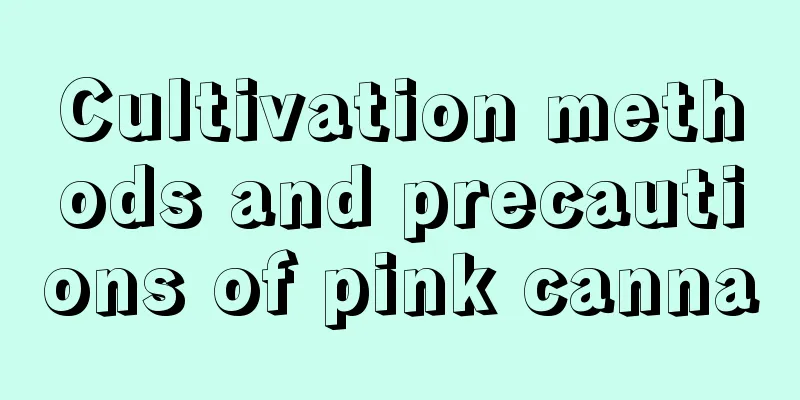How to grow broad beans with high yield

|
Broad bean, also known as Luohan bean, Hu bean, orchid bean, etc., is an annual or biennial plant of the genus Vicia in the legume family. It can be used as both food and vegetable, has a large market demand and has promising planting prospects. So what is the high-yield technology for broad beans? How to grow broad beans? Let’s learn more about it below. 1. Site selection and land preparation It is best to choose loose, fertile and well-drained soil for planting. Before planting, the soil needs to be tilled, weeds and stones removed, and the soil kept moist. At the same time, combined with land preparation, apply 20-25 kg of superphosphate plus 500-800 kg of organic fertilizer per mu as base fertilizer. 2. Seed treatment 10-15 days before sowing broad beans, choose a sunny day to spread the seeds out for 2-3 days. After drying the seeds, soak them in water at about 20℃, and then place them in a moist environment with a temperature of about 25℃ and a humidity of about 80% for germination for 2-3 days, until the seeds turn white and can be sown. 3. Planting time Broad beans are usually planted in spring or autumn. Among them, spring is from mid-to-late March to early April, and autumn is from early October to early November. 4. Planting method It can be sown in strips or on demand. The planting density is about 15-20 cm between plants, 25-30 cm between rows, and 6,000-7,000 seedlings per mu. When sowing, 2-3 seeds can be sown in each hole, the sowing depth should be about 4-6 centimeters, and the sowing amount per mu should be about 6-10 kilograms. 5. Field management (1) Watering: Broad beans like moisture but avoid waterlogging. They need to be watered in time according to the soil and weather to keep them moist, especially during the flowering and podding period. Sufficient water is needed, but excessive moisture should be avoided to prevent root rot. (2) Fertilization: Broad beans have large demand for fertilizer, so apply fertilizer in a timely manner according to their growth needs. Usually during the flowering and pod-setting period, fertilizers need to be added according to the condition of the seedlings, such as potassium dihydrogen phosphate foliar fertilizer or compound fertilizer . (3) Intertillage and weeding: During the seedling stage of broad beans, 1-2 intertillage and weeding are required to loosen the soil, remove weeds, promote nutrient exchange, and facilitate root growth and nitrogen fixation. 6. Disease prevention and control The main diseases of broad beans are red spot and rust, which are mostly caused by high humidity and poor permeability. First of all, preventive measures should be taken, including digging ditches to drain water, reducing humidity, improving ventilation, etc., and checking for diseases from late March to early April. After the disease is discovered, use quicklime and copper sulfate to make Bordeaux mixture and spray it on sunny days. Spray once every 8-10 days, and spray 2-3 times in a row to control the disease. In general, high-yield cultivation of broad beans involves many aspects, such as site selection, seed treatment, sowing methods, field management, disease prevention and other key points. Only by doing these things well can we ensure good yield and quality of broad beans.
|
<<: Pecan planting conditions and propagation methods
>>: How to grow sweet potatoes for high yield?
Recommend
How to take cuttings of evening primrose
Preparation Generally, the cuttings used for even...
"Azalea" is not easy to grow. If you don't pay attention to these "4 points", the flowers will wither and the leaves will fall.
soil Azalea plants like acidity, so when choosing...
How to propagate fragrant lily and what to pay attention to
Lily breeding method The propagation of fragrant ...
How and when to plant wood ear vegetable
Planting time and month of Auricularia auricula A...
The difference between sycamore and magnolia
1. Differences in branches The small branches of ...
How to make the Brazilian tree bloom and how to care for it during the flowering period
1. How to make the Brazilian tree bloom 1. Suitab...
How to propagate shrimp orchid
Fall breeding Breeding area When propagating Shri...
Why are the leaves of the weeping angel drooping? What should I do?
1. Inappropriate light exposure Reason: If it is ...
How to promote new buds of tiger lily
1. Suitable soil If you want Sansevieria to sprou...
Can strawberries be grown hydroponically?
Strawberry is a fruit with high economic value an...
How to deal with yew root rot
1. Caused by excessive watering When caring for y...
Honeysuckle potted cultivation methods and precautions
1. Breeding methods 1. Water and fertilizer: Beca...
How can we prevent Monstera from growing too tall? Can Monstera be treated with dwarfing agent?
1. How to prevent leggy growth 1. Adequate sunlig...
Which large green plants are easy to grow (indoors and outdoors)
1. Varieties of large green plants that are easy ...
How to prune four-season roses
Seasonal Rose Pruning Time The pruning of four-se...









